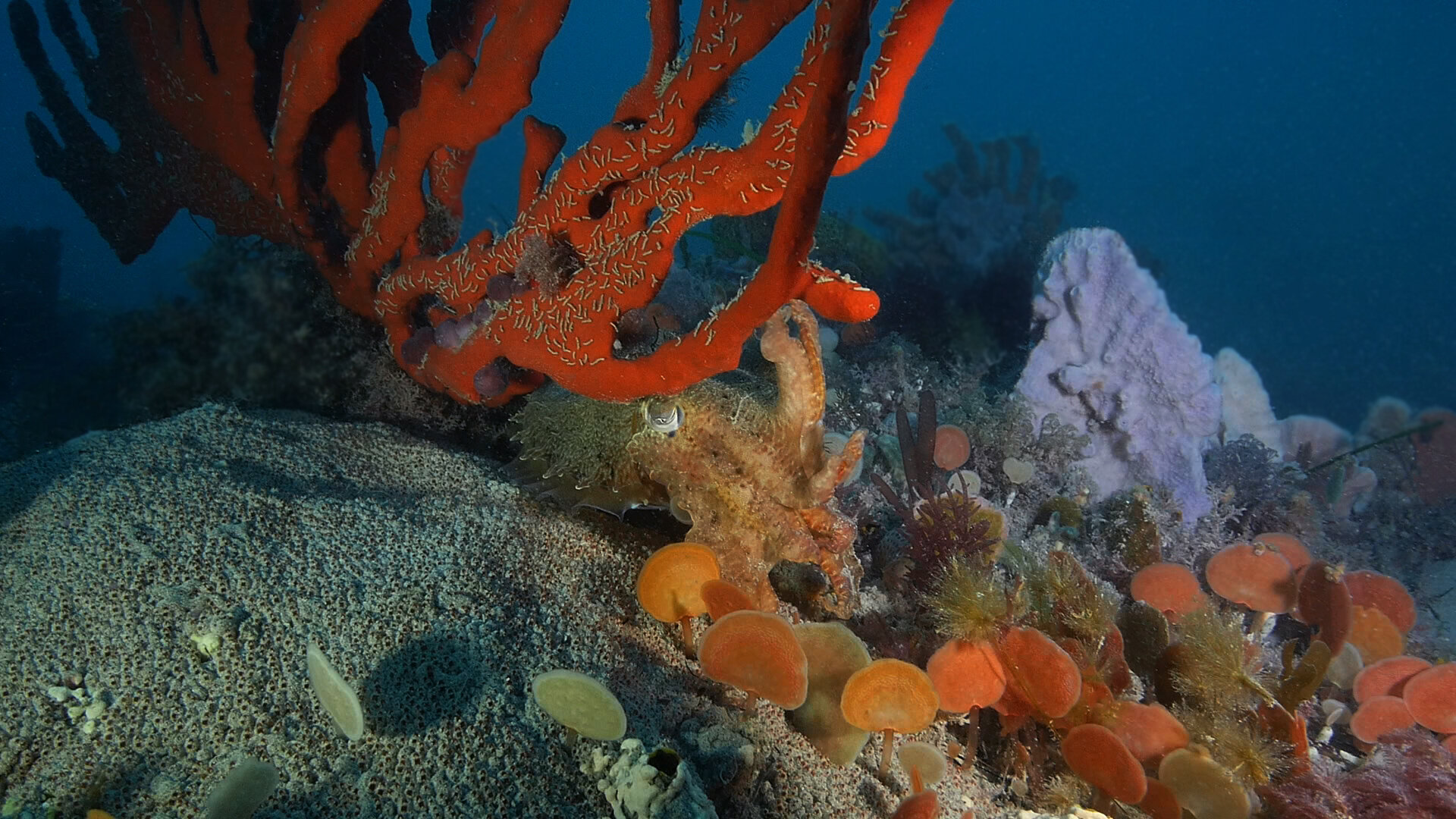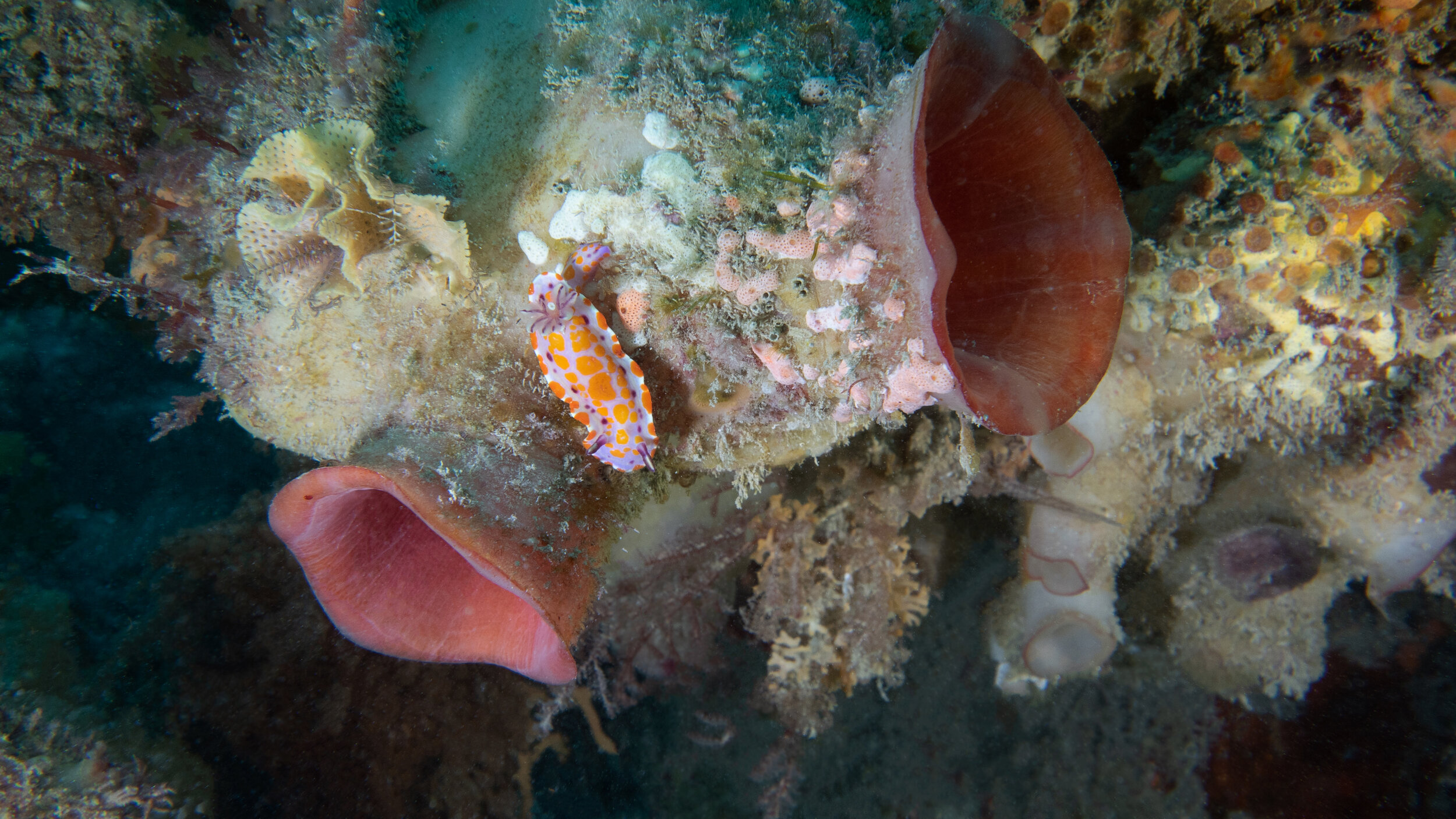spongeS
Sponges (Porifera spp.) are the simplest of all animals. They are multicellular organisms with bodies full of pores and channels that allow water to circulate through them. Sponges are colonial animals, meaning they are a collective life form composed of associations of individual organisms that are incompletely separated, like coral.
Porifera - A diverse phylum
There are about 10,000 known species of sponge found in all of the world’s oceans with scientists estimating around twice this number still yet to be described. The most varied class of sponges are demosponges and have a long lifespan of 500 to 1000 years. It is currently estimated that Australia possesses a little over 1400 described species with at least half of these thought to occur nowhere else in the world.
Organless with internal skeletons
Sponges have no real organs. Instead, their body is made up of a fibrous protein and hard, pointed internal skeletons called spicules made of calcium carbonate or silica. These internal skeletons can determine the sponge’s shape and act as a deterrent to large predators though there are a few small fish species and sea slugs that do feed on sponges. Sponges also defend themselves by producing chemically active compounds.
Hydrodynamics
Unlike algae and corals, sponges must externally source their food. Their shapes and colour vary and they can be symmetrical or asymmetrical. Whatever their decided shape, it is adapted for the most efficient water flow through its central cavity where it receives its nutrients. If water flow has been minimised, all known sponges are able to remold their bodies to another shape. As filter feeders, sponges use the water flow and specialised cells that have a paddle like flagella to filter up to four to five times their own volume every minute!
Broadcast spawners
In general, sponges are hermaphrodites producing both sperm and eggs. When the sperm cells are released into the water they fertilise the eggs which develop into larvae and swim to their chosen settling place.
Fast Facts:
Species: Porifera spp.
Feeding: Nutrients, detritus and plankton
Habitat: Various substrates on both shallow and deep water reefs
Distribution: Worldwide
Special Power: Body morphing and mass water filtration









